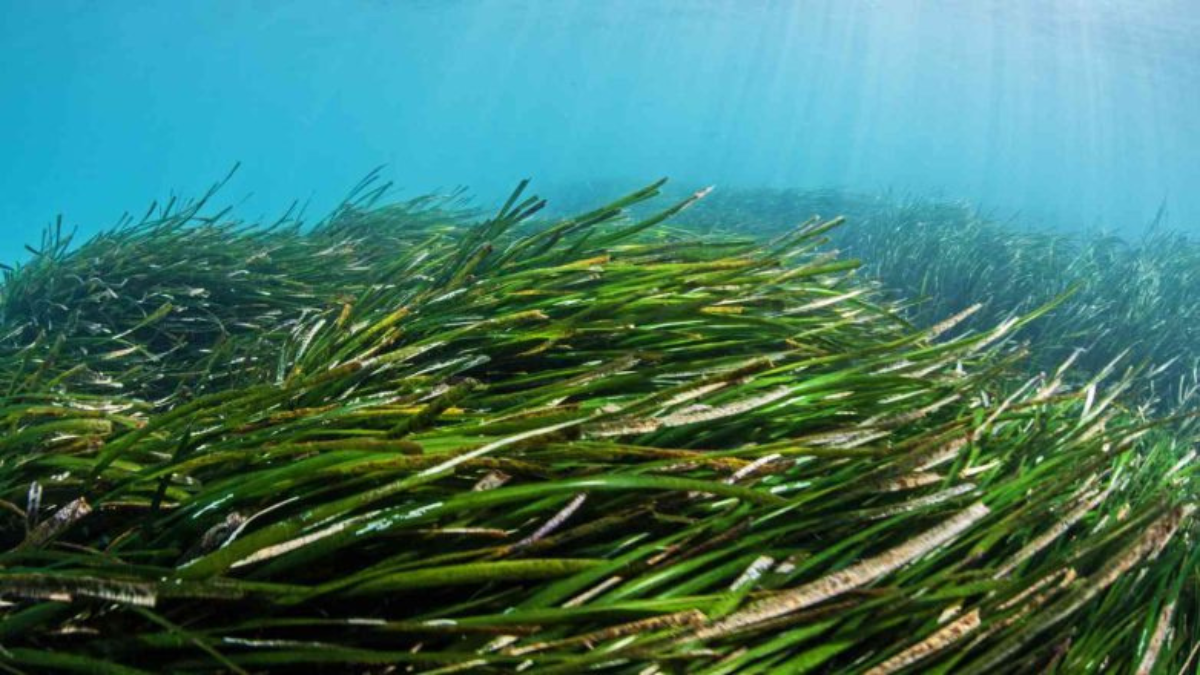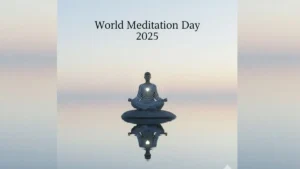World Seagrass Day is celebrated annually on March 1 to highlight the ecological importance of seagrass and promote conservation efforts. Seagrass plays a vital role in maintaining the marine ecosystem, supporting marine biodiversity, stabilizing coastlines, and acting as a major carbon sink. The United Nations General Assembly (UNGA) officially declared this observance on May 22, 2022, following a resolution proposed by Sri Lanka to emphasize the urgent need for seagrass conservation.
What is Seagrass?
Seagrass is a flowering marine plant that thrives in shallow coastal waters across the globe, except in Antarctica. It is one of the few plant species that have adapted to life under the sea, providing food and shelter to a wide variety of marine organisms. Unlike seaweed, seagrass possesses roots, stems, and leaves, making it more similar to terrestrial plants.
History of World Seagrass Day
Seagrass has existed for over 100 million years, evolving from terrestrial plants that adapted to underwater environments. Over time, it developed mechanisms to survive in saline conditions, reproduce through underwater pollination, and withstand ocean currents.
Realizing the ecological significance of seagrass, the United Nations declared March 1 as World Seagrass Day to raise awareness about its declining population and encourage global conservation efforts. This initiative was driven by a resolution proposed by Sri Lanka, emphasizing the importance of preserving seagrass for future generations.
Types of Seagrass and Their Global Presence
There are 72 known species of seagrass distributed across 159 countries, covering an estimated 300,000 square kilometers of seabed. Some of the most common types of seagrass include:
- Eelgrass (Zostera marina) – Found in temperate regions, providing habitats for fish and crustaceans.
- Shoal Grass (Halodule wrightii) – Thrives in shallow waters and serves as a food source for marine herbivores.
- Star Grass (Halophila engelmannii) – Grows in tropical and subtropical regions, supporting diverse marine species.
Ecological Importance of Seagrass
Seagrass ecosystems provide numerous environmental, social, and economic benefits, including:
1. Marine Biodiversity and Habitat
Seagrass meadows act as nurseries for juvenile fish, offering shelter and food. Several marine species, including turtles, manatees, sharks, and plankton, rely on seagrass for sustenance. Additionally, many commercially important fish species depend on seagrass beds during their early life stages.
2. Water Quality Improvement
Seagrass plays a crucial role in maintaining water quality by trapping sediments and pollutants, preventing erosion, and stabilizing the seabed. This helps in maintaining the clarity of coastal waters, benefiting marine organisms and coral reefs.
3. Carbon Sequestration and Climate Change Mitigation
One of the most critical functions of seagrass is its ability to act as a carbon sink. Seagrass sediments store between 4,200 and 8,400 Tg (teragrams) of organic carbon, nearly twice the amount of carbon per area compared to land soil. Additionally, seagrass stores up to 18% of the world’s oceanic carbon, surpassing even tropical rainforests in carbon sequestration.
Threats to Seagrass Ecosystems
Despite its ecological importance, seagrass ecosystems face several threats, primarily due to human activities. According to a United Nations report, approximately 7% of seagrass habitats are lost annually, equating to a football field of seagrass disappearing every 30 minutes. Major threats include:
- Coastal development and land reclamation – Destroying natural seagrass meadows.
- Pollution and agricultural runoff – Introducing harmful chemicals that degrade water quality.
- Climate change and rising sea levels – Impacting seagrass growth and distribution.
- Unsustainable fishing practices – Trawling and anchoring disrupt seagrass beds.
Conservation Efforts and Global Initiatives
To mitigate the decline of seagrass, conservation initiatives have been launched globally. Some key efforts include:
- Seagrass Restoration Projects – Countries like Australia, the UK, and the USA are actively working on replanting and restoring degraded seagrass beds.
- Marine Protected Areas (MPAs) – Several regions have designated protected zones to prevent destructive activities near seagrass habitats.
- Research and Awareness Campaigns – Organizations like the Seagrass-Watch Program monitor and study seagrass health while educating communities about conservation.
- Sustainable Tourism Practices – Encouraging responsible snorkeling, diving, and boating activities to prevent damage to seagrass beds.
How Can We Contribute to Seagrass Conservation?
Individuals can also play a role in protecting seagrass ecosystems through simple actions, such as:
- Avoiding littering and reducing plastic waste to prevent marine pollution.
- Supporting eco-friendly tourism that prioritizes marine conservation.
- Participating in beach clean-ups and advocating for seagrass protection policies.
- Educating others about the importance of seagrass and its role in sustaining marine life.
World Seagrass Day 2025 – Key Highlights
| Category | Details |
|---|---|
| Why in News? | World Seagrass Day is observed annually on March 1 to highlight the ecological significance of seagrass and promote conservation efforts. The United Nations declared this observance on May 22, 2022, following a resolution proposed by Sri Lanka. |
| What is Seagrass? | A flowering marine plant found in shallow coastal waters worldwide (except Antarctica). Unlike seaweed, seagrass has roots, stems, and leaves, resembling terrestrial plants. |
| History | Seagrass has existed for over 100 million years, adapting from terrestrial plants to underwater ecosystems. UNGA declared March 1 as World Seagrass Day to raise awareness of its declining population and encourage conservation. |
| Types of Seagrass | – Eelgrass (Zostera marina): Found in temperate waters, providing fish habitats. – Shoal Grass (Halodule wrightii): Thrives in shallow waters and serves as a food source for marine herbivores. – Star Grass (Halophila engelmannii): Supports diverse marine species in tropical and subtropical waters. |
| Ecological Importance | – Supports Marine Biodiversity: Acts as a nursery for juvenile fish and provides food for turtles, manatees, and sharks. – Improves Water Quality: Traps sediments and pollutants, preventing coastal erosion. – Carbon Sequestration: Stores 4,200-8,400 Tg of carbon, capturing more carbon per area than tropical rainforests. |
| Threats to Seagrass | – Coastal Development & Land Reclamation – Destroying natural seagrass meadows. – Pollution & Agricultural Runoff – Degrading water quality. – Climate Change & Rising Sea Levels – Affecting growth and distribution. – Unsustainable Fishing Practices – Trawling and anchoring damaging seagrass beds. |
| Conservation Efforts | – Seagrass Restoration Projects: Australia, UK, and the USA are actively replanting seagrass beds. – Marine Protected Areas (MPAs): Preventing destructive activities near seagrass habitats. – Research & Awareness: Programs like Seagrass-Watch monitor and educate on conservation. – Sustainable Tourism: Encouraging responsible boating, diving, and snorkeling. |
| How Individuals Can Help? | – Reduce plastic waste to prevent marine pollution. – Support eco-friendly tourism that prioritizes conservation. – Participate in beach clean-ups and advocate for seagrass protection policies. – Educate others about the importance of seagrass in marine ecosystems. |



 World Basketball Day 2025 Celebrates Bas...
World Basketball Day 2025 Celebrates Bas...
 UN Celebrates Second World Meditation Da...
UN Celebrates Second World Meditation Da...
 Winter Solstice 2025 Observed on Sunday,...
Winter Solstice 2025 Observed on Sunday,...







